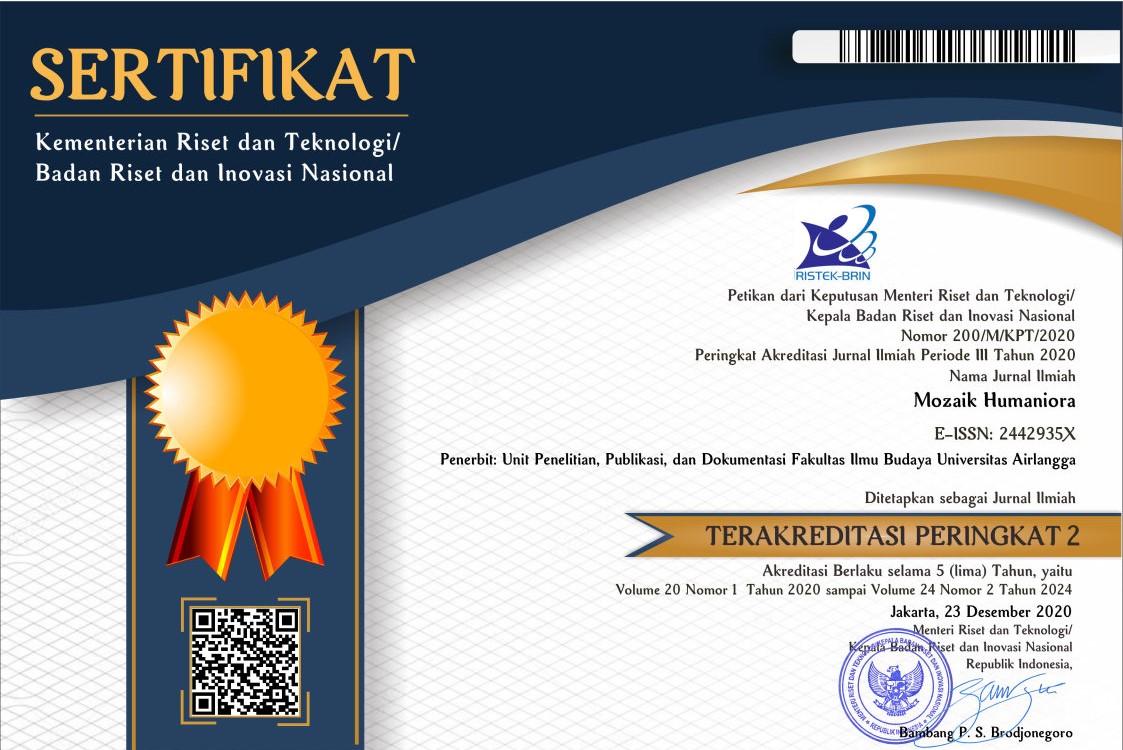Virtual Identity of Urban and Rural Muslim Youth
Downloads
This research discusses the virtual identity of urban and rural Muslim teenagers. The method used is virtual ethnography, data collection techniques using documentation, interviews and observation. The research results show that cyber religion between urban and rural teenagers is not much different. Muslim teenagers often consume content or information on digital platforms. For urban Muslim teenagers, matters of religious activity are not for public consump-
tion, but are instead private matters. This is different from Muslim teenagers in villages, who not only consume but also produce religious content because the majority of teenagers in villages have a background as alumni of Islamic boarding school students, so they already have sufficient religious knowledge, so they have the courage to produce religious content, this is This is also done as a form of broadcasting or preaching Islam as well as representing themselves as Muslim teenagers. From the cyber religion model of Muslim teenagers, both urban and rural, it shows that the religious identity formed and represented by teenagers shows liquidity, where teenagers want to be known as free, fluid individuals, even for religious activities, where with information technology this becomes easier. and practical.
Arifinsyah. 2014. “Respon Islam dan Kristen terhadap Modernitas.” Analytica Islamica, 3 (2), 274—295. DOI: http://dx.doi.org/10.30829/jai.v3i2.451.
Barker, C. 2004. The SAGE Dictionary of Cultural Studies. London: Sage Publications Ltd.
Bauman, Z. 2000. Liquid Modernity. Cambridge: Polity Press.
Castells, M. 1997. The Power of Identity. Malden: Blackwell.
________. 2004. The Network Society. USA: Edward Elgar Publishing, Inc.
Giddens, A. 1994. “Reflexive Modernization.” Dalam Living in Post Traditional Society, disunting oleh U. Beck, A. Giddens, & S. Lash. Cambridge: Polity Press.
Giddens, A. 2003. Masyarakat Post Tradisional, diterjemahkan oleh Ali Noer Zaman. Yogyakarta: Ircisod.
Giddens, A. 2006. Modernity and Self-Identity (Vol. 5). Cambridge: Polity Press.
Goffman, E. 1956. The Presentation of Self in Everyday Life. Edinburgh: University of Edinburgh Social Sciences Research Centre.
Hine, C. 2000. Virtual Ethnography. London: Sage Publications Ltd.
Jenkins, R. 2008. Social Identity. London: Routledge.
Kellner, D. 2013. “Baudrillard, Jean (1929—2007).” Dalam Encyclopedia of Media and Communication, disunting oleh M. Danesi. Toronto: University of Toronto Press.
Kertamukti, R. 2022. “Generasi Z , Digital, dan Islam Pada Masyarakat Digital di Era Pandemi Covid 19.” Dalam Masyarakat Digital: Fenomena dan Nomena, disunting oleh D. B. Setyohadi & S. B. H. Hutomo. Yogyakarta: Buku Litera.
Kokswijk, J. van. 2008. Digital Ego: Social and Legal Aspects of Virtual Identity. Delft, Netherlands: Eburon Academic Publishers.
Lauer, R. H. 2003. Perspektif tentang Perubahan Sosial. Jakarta: Rineka Cipta.
Lefrancois, G. 1993. The Life Span (4th ed.). Belmont California: Wadsworth Publishing Company.
Malik, H. 2021a. “Cyber Religion dan Real Religion di Tengah Masyarakat Digital.” Jurnal Komunika 4 (1), 63—78.
________. 2021b. “Youtube sebagai Guru Agama di Era Cyber Religion.” AdZikra: Jurnal Komunikasi dan Penyiaran Islam 12 (1), 12—26. DOI: https://doi.org/10.32678/adzikra.v12i1.4548.
Marcia, J. 1993. Ego Identity: A Handbook for Psychosocial Research. Newyork: Springer-Verlag.
Mundiri, A. & I. Nawiro. 2019. “Ortodoksi dan Heterodoksi Nilai-Nilai di Pesantren: Studi Kasus Pada Perubahan Perilaku Santri di Era Teknologi Digital.” Jurnal Tatsqif; Jurnal Pemikiran Dan Penelitian Pendidikan 17 (1), 1—18. DOI: https://doi.org/10.20414/jtq.v17i1.527.
Nasrullah, R. 2011. “Konstruksi Identitas Muslim di Media Baru.” Jurnal Komunika 5 (2), 221—234.
Pawanti, M. H. 2013. “Masyarakat Konsumeris Menurut Konsep Pemikiran Jean Baudrillard.” Depok: Universitas Indonesia.
Setiawan, R. 2016. “Peran Etika dalam Pendidikan di Era Teknologi Media Sosial.” Konferensi HIDESI XXVI. Surabaya.
Spradley, J. P. 1997. Metode Etnografi, diterjemahkan oleh Misbah Zulfa Elizabeth. Yogyakarta: Tiara Wacana.
Taylor, S. J., R. Bogdan, & M. DeVault. 2015. Introduction to Qualitative Research Methods A Guidebook and Resources. New Jersey: John Wiley & Sons.
Tomlison, J. 1999. Localization and Culture. Cambridge: Polity Press.
Copyright (c) 2024 Mahfudlah Fajrie, Muhammad Nashrul Haqqi, Akhmad Pandhu Wijaya, Agung Nugroho

This work is licensed under a Creative Commons Attribution-ShareAlike 4.0 International License.

Mozaik Humaniora is licensed under a Creative Commons Attribution-ShareAlike 4.0 International License. Both authors and Mozaik Humaniora agree with the following attribution of journal:
1. Copyright of this journal is possession of Author, by the knowledge of the Editorial Board and Journal Manager, while the moral right of the publication belongs to the author.
2. The journal allows the author(s) to retain publishing rights without restrictions
3. The legal formal aspect of journal publication accessibility refers to Creative Commons Attribution Share-Alike (CC BY-SA).
4. The Creative Commons Attribution Share-Alike (CC BY-SA) license allows re-distribution and re-use of a licensed work on the conditions that the creator is appropriately credited and that any derivative work is made available under "the same, similar or a compatible license”. Other than the conditions mentioned above, the editorial board is not responsible for copyright violation.


















